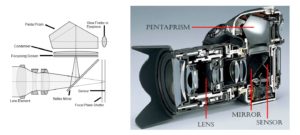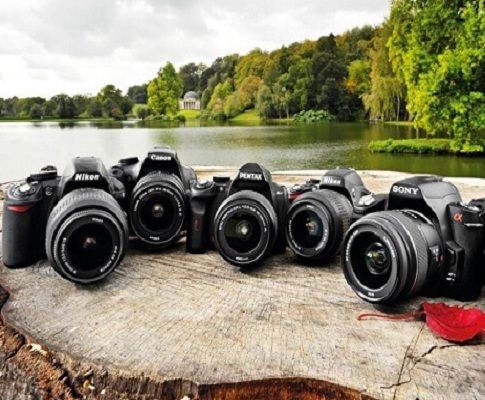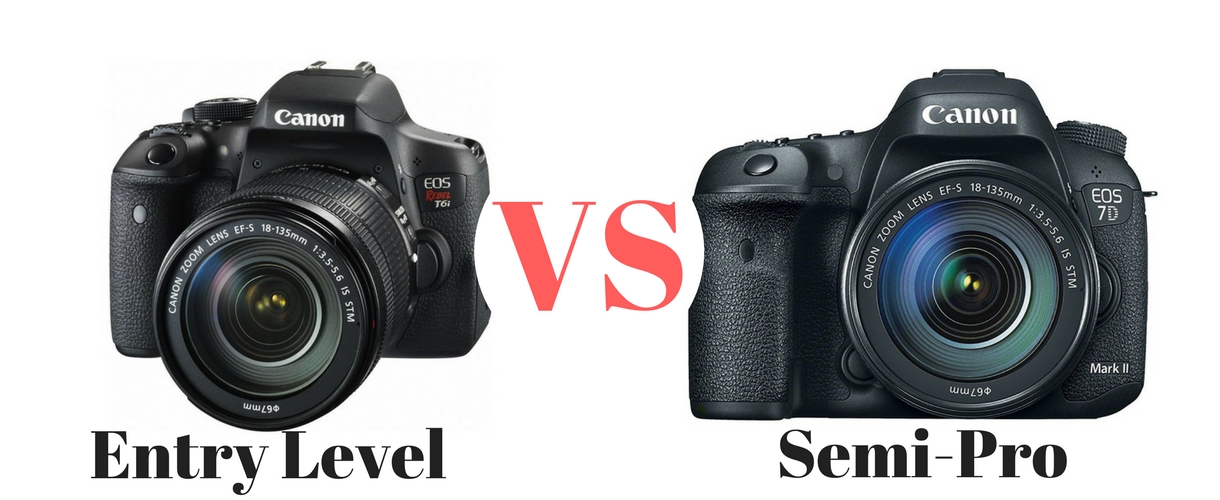SLR “single lens reflex” cameras have been available since the 19th century and used film as its recording medium,
it was not until 1991 that the first commercial DSLR “Digital Single Lens Reflex” having an image sensor appeared. These new DSLR cameras as against phone cameras and point and shoot cameras
came along with interchangeable lenses.
Today’s DSLR camera’s uses a form of mirror mechanism to let light fully pass onto the image sensor by way of moving the mirror out of the way or by using a mirror mechanism to reflect light from a camera lens onto an optical viewfinder.
A typical DSLR camera is comprised of the following components: lens, image sensor, shutter, reflex
mirror, focusing screen, condenser lens, pentaprism and the eye piece/ view finder.

WHAT IS AN ISO?
In simple terms, an ISO concerns the level of sensitivity of a camera to light, for the higher an ISO number the more the sensitivity of the camera and the lesser the ISO number, the less sensitive it is to light. The image
sensor is the key component within the camera that is responsible for alternating the sensitivity of the camera and is sometimes referred to as the most important part of a camera responsible for gathering light and transforming it to an image. With an increased sensitivity, a camera’s sensor may capture images in environments with low light without having to use the cameras flash, but with a higher sensitivity, there is the addition of what is
referred to as noise or grain within the camera community.
Typically, ISO numbers start from 100-200 (Base ISO) and increment in value in geometric progression (power of
two). So, the ISO sequence is: 100, 200, 400, 800, 1600, 3200, 6400 and etc. The important thing to understand is that each step between the numbers effectively doubles the sensitivity of the sensor. So, ISO 200 is twice more
sensitive than ISO 100, while ISO 400 is twice more sensitive than ISO 200. This makes ISO 400 four times more sensitive to light than ISO 100, and ISO 1600 sixteen times more sensitive to light than ISO 100, so on and so forth.
What does it mean when a sensor is sixteen times more sensitive to light? It means that it needs sixteen times less time to capture an image!
WHEN TO USE LOW ISO
Low level of ISO should be used whenever there is much light within the area, this is for the purpose of retaining the most amount of detail and having the highest image quality. Although there are instances where low ISO may be used in dark or dim environments an instance is where the camera is mounted on a tripod or on a flat surface in which case the camera might need a little bit of time to adequately capture the scene.
WHEN TO INCREASE ISO
ISO should be increased when the environment is lacking adequate light so as to enable the camera quickly capture
an image, increasing the ISO also helps in capturing fast shots i.e. a man running. However, before increasing the ISO, you should be wary of the introduction of noise to the image, for the bigger the ISO the more noise in the
image.
WHAT IS THE SHUTTER SPEED
Also referred to as “exposure time”, it concerns the length of time that a camera shutter is left open to expose light
into the camera sensor. If the shutter speed is fast, it might help in freezing an action completely and where it is slow, creates an effect known as “motion blur” i.e. where moving objects appear to be blurred along the motions direction. It is used where there is a need to communicate the sense of speed to a viewer.
Most cameras would usually automatically set the shutter speed themselves usually through in camera metering. However, there are two ways to manually set the shutter speed:
* By changing the setting of the camera to “Shutter Priority” mode. This is where the cameras shutter speed is set and the camera automatically selects the needed aperture.
* By changing the setting of the camera to “Manual” mode. This is where both shutter speed and aperture are set manually.
WHAT IS APERTURE?
In simple terms, an aperture is a hole within the camera lens, through which light travels into the camera, it
controls the amount of light that passes into the camera at all times and may be increased or decreased.
SIZE OF APERTURE
The part of the lens which controls the size of the aperture is called the “diaphragm” and serves the purpose
of blocking or hindering light, however with an exception as to such light that passes in through the aperture. The aperture is expressed in f-numbers in photography language i.e. f/2.0. These are also known as “f-stops” and are a way of describing the aperture size, or how open or closed the aperture should be. A smaller f-stop means a larger aperture and a larger f-stop means a smaller aperture and this in a way plays a large role in determining the depth of field.
LENS APERTURES: MAXIMUM AND MINIMUM
All camera lens has a prescribed limit on either how large or how small an aperture can become and a cursory
look at the lens specifications would reveal what the minimum apertures (highest f-numbers) and maximum apertures (lowest f-numbers) of the lens are, although the maximum aperture is much more important than that of the minimum, because it shows how fast the lens is, therefore a lens that has an aperture of f/1.4 at its maximum aperture is duly considered to be quite a fast lens this is because it can pass through more light, it is for this reason that lenses with larger apertures are best suited for low light photography.
It must also be pointed that the minimum aperture should not be considered so important because as of today most
modern lenses provide at least f/16 as the minimum aperture, which is enough for everyday photography needs.
The Video Below explains all of this in more detail, with good examples.
SUMMARY
To obtain the perfect picture is needs a combination of the above, but the art of taking the picture is another thing to consider, but before you understand the latter you must first consider the former before arriving at the destination of being able to take the perfect picture.









